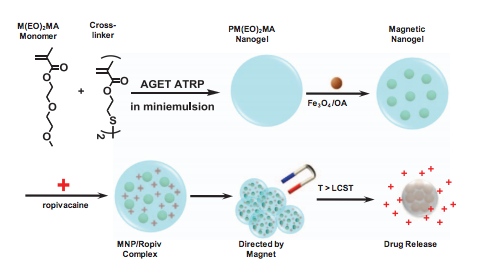Devising a safe and efficient protocol for using magnetic nanoparticles to target drug delivery is an ongoing challenge whose study has yielded promising results. While the majority of these studies have been focused on delivering cytotoxic drugs to cancer cells, there is a range of possible applications for which targeted delivery could prove invaluable.
A recent proof of principle study carried out by researchers at the University of Pittsburgh School of Medicine has revealed that magnetic nanoparticles can be used to deliver a nerve blocking agent. The investigation, carried out in lab rats, showed that nanoparticles could successfully ferry an anesthetic to a specifically targeted location in the body. The results, published in Anesthesia and Analgesia, could mark an interesting advance in the way perioperative nerve blocking agents are administered to patients.
Delivery by nanoparticles is targeted and specific
The nanoparticles used in the study consisted of magnetite (Fe3O4) coupled with ropivacaine, a common local anesthetic. The nanoparticles were injected into the rats intravenously and magnets were used to direct the particles to the right hindpaw. Successful delivery of the anesthetic was assessed by testing the animal’s reaction to a thermal stimulus.
Fig. 1. Scheme of magnetic microgels for targeted drug delivery. Check the original source.
While an ankle block was observed in the right hindpaw, the location to which the nanoparticles had been magnetically directed, no such effect was seen in the left hindpaw. This result proves that delivery of the nerve blocking agent was both targeted and specific.
Targeted delivery might increase safety
Rats receiving the anesthetic through nanoparticle delivery were subjected to a dosage of ropivacaine that was potentially fatal, yet none of the animals had an adverse reaction. What’s more, the anesthetic effect was similar to that seen in the control rats, which received a standard dose of anesthetic administered without the use of nanoparticles.
These findings have important implications. They indicate a way to direct the delivery of local and regional anesthetics, allowing the rest of the body to remain unaffected. Of equal importance is the fact that they offer a way to increase safety, allowing administration of high doses of anesthetic, without subjecting the patient to harm.
Investigators indicated that further study was both necessary and warranted. In time, they aim to translate their results to clinical applications.




